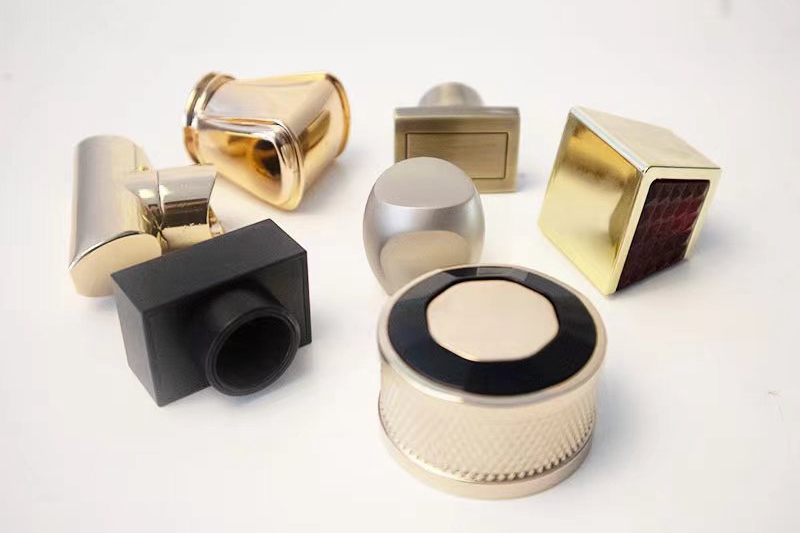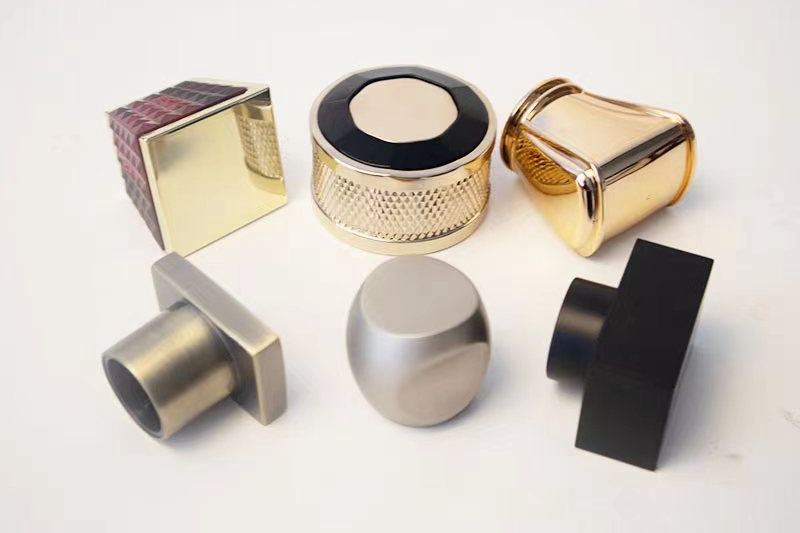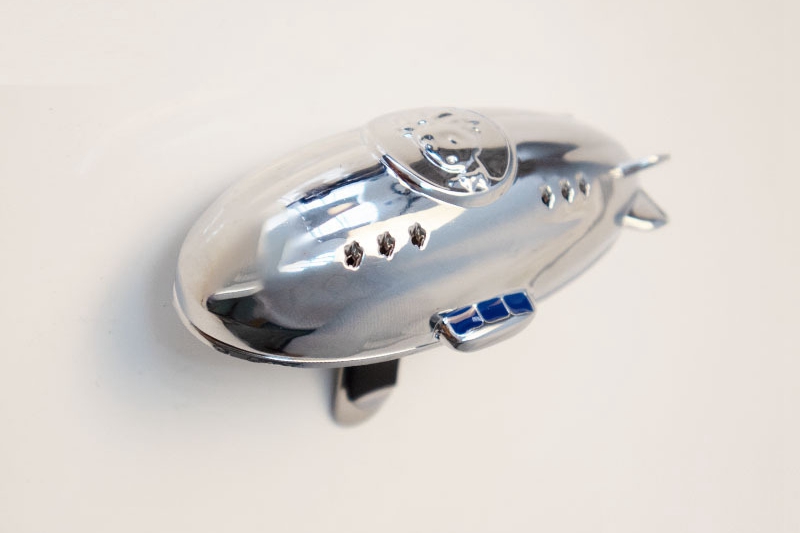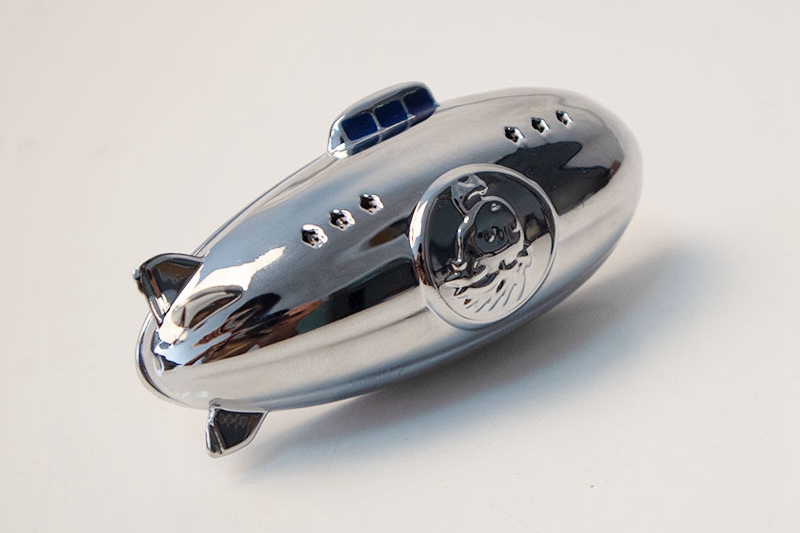Electroplating Process: Enhancing Product Durability and Appearance
Introduction
Electroplating is a versatile and essential process in modern manufacturing, involving the application of a metal coating on the surface of a substrate through electrochemical deposition. This technique enhances various products' appearance, durability, and functionality, making them indispensable in the automotive, electronics, aerospace, and jewelry industries.
The significance of electroplating lies in its ability to provide protective, decorative, and functional benefits to a wide range of materials. Electroplating can improve corrosion resistance, reduce wear and tear, enhance electrical conductivity, and offer an aesthetically pleasing finish by depositing a thin metal layer onto a surface.
Electroplating Process
1.1 Definition and Basic Principle
Electroplating is coating a conductive surface with a thin metal layer using an electric current. This process involves the transfer of metal ions from a solution (electrolyte) onto the surface of the substrate, creating a uniform and durable coating. The fundamental principle is based on electrochemical reactions where the substrate to be plated acts as the cathode, and the metal to be deposited serves as the anode.
1.2 Steps Involved in Electroplating
1. Cleaning and Preparation of the Substrate:
The substrate must be meticulously cleaned to remove dirt, grease, or oxidation. It can involve mechanical polishing and chemical or ultrasonic cleaning to ensure a pristine surface for optimal coating adhesion.
2. Electrolyte Solution and Its Composition:
The electrolyte solution, also known as the plating bath, contains the metal ions to deposit. The composition of this solution is critical for the quality and characteristics of the electroplated layer. Typical solutions include nickel sulfate for nickel plating, copper sulfate for copper plating, and chromium trioxide for chrome plating.
3. Electroplating Setup: Anode, Cathode, and Power Source:
The setup involves immersing the substrate (cathode) and a metal rod (anode) in the electrolyte solution. A direct current (DC) power source is connected to the anode and cathode, and when the current flows, metal ions from the anode dissolve into the solution and are deposited onto the cathode.
4. Deposition Process and Thickness Control:
As the current passes through the solution, metal ions reduce onto the surface of the cathode, forming a thin, even layer. The thickness of the electroplated layer is controlled by adjusting the current density and the duration of the plating process. Precision in these parameters ensures uniformity and the desired thickness of the coating.
5. Rinsing and Finishing Steps:
After electroplating, the coated substrate is thoroughly rinsed to remove any residual electrolyte solution. Additional finishing processes, such as buffing, polishing, or passivation, may be applied to enhance the surface quality and performance of the electroplated layer.
Materials That Can Be Used for Electroplating
2.1 Common Substrate Materials
Electroplating can be applied to a variety of substrate materials, both metallic and non-metallic, as long as the substrate can conduct electricity or be made conductive. Here are some commonly used substrate materials:
Metals:
Steel is widely used in the automotive and construction industries for its strength and durability.
Copper: Often electroplated for electrical applications due to its excellent conductivity.
Aluminum: Lightweight and used in aerospace and consumer electronics.
Zinc: Commonly used as a base material for corrosion-resistant coatings.
Nickel: Often used for its magnetic properties and resistance to oxidation.
Non-metals:
Plastics: Certain plastics can be electroplated after a conductive coating, commonly used in decorative applications and electronics housing.

2.2 Suitable Coating Materials
The choice of coating material in electroplating depends on the desired properties and applications. Some of the most common electroplating materials include:
Metals:
Gold: Provides excellent corrosion resistance, electrical conductivity, and a luxurious finish. It is commonly used in electronics, jewelry, and high-end decorative items.
Silver: Known for its superior conductivity and aesthetic appeal, it is often used in electrical components and decorative items.
Copper: Offers excellent conductivity and is used as an undercoat for other electroplating processes to improve adhesion.
Nickel: Provides corrosion resistance, wear resistance, and a bright finish. Used in automotive, electronics, and household fixtures.
Chromium: Known for its hardness and high wear resistance, it is often used in automotive parts and tools for a shiny, durable finish.
Zinc: Commonly used for corrosion protection of steel parts, especially in the automotive and construction industries.
Alloys:
Brass (Copper-Zinc Alloy): Provides a decorative, gold-like appearance and is used in musical instruments, hardware, and decorative items.
Bronze (Copper-Tin Alloy): Known for its strength and resistance to corrosion, it is used in bearings, clips, electrical connectors, and more.
Surface Finish Requirements of Electroplated Substrates
3.1 Importance of Surface Preparation
Surface preparation is a critical step in the electroplating process, as the quality of the final coating largely depends on the condition of the substrate. Proper surface preparation ensures strong adhesion between the substrate and the coating, preventing defects such as peeling, flaking, and uneven deposition.
Cleanliness: Any dirt, grease, or oxide layers on the substrate surface can interfere with electroplating. Ensuring a clean surface is essential for achieving a uniform and durable coating.
Smoothness: A smooth substrate surface helps obtain an even and consistent electroplated layer. Surface imperfections can lead to defects in the coating and reduced performance of the electroplated part.
3.2 Techniques for Surface Preparation
Several techniques are employed to prepare the substrate surface for electroplating. Each method is chosen based on the type of substrate and the specific requirements of the coating.
Mechanical Polishing:
Purpose: To remove surface irregularities and create a smooth finish.
Process: Involves abrasive materials such as sandpaper or polishing compounds to grind down and smooth the surface. It is often done using polishing machines or manual tools.
Applications: Commonly used for metals like steel, copper, and aluminum.
Chemical Etching:
Purpose: To clean and slightly roughen the substrate surface, enhancing adhesion.
Process: The substrate is dipped in a chemical solution that reacts with and removes contaminants and oxides. The specific chemicals used depend on the substrate material.
Applications: Effective for preparing metals and some non-metals like plastics that have been made conductive.

Ultrasonic Cleaning:
Purpose: To remove fine particles and contaminants from the substrate using high-frequency sound waves.
Process: The substrate is immersed in a cleaning solution and subjected to ultrasonic vibrations. These vibrations create microscopic bubbles that implode, effectively cleaning the surface without abrasion.
Applications: Suitable for delicate or complex parts where mechanical cleaning might be impractical or damaging.
Materials and Functions of the Coating
4.1 Types of Coating Materials
The selection of coating materials in electroplating is crucial for achieving the desired properties and performance of the final product. Here are some common types of coating materials used in electroplating:
Pure Metals:
Gold: Known for its excellent corrosion resistance, electrical conductivity, and aesthetic appeal. Often used in electronics, jewelry, and decorative items.
Silver: Valued for its superior conductivity and antibacterial properties. It is commonly used in electrical connectors, medical instruments, and tableware.
Copper: Provides excellent electrical conductivity and is often used as an undercoat to improve adhesion for other coatings, such as nickel or chromium.
Nickel: Offers good corrosion resistance, hardness, and a bright finish. Widely used in automotive parts, household fixtures, and industrial machinery.
Chromium: Known for its hardness, wear resistance, and shiny appearance. Commonly used in automotive trim, tools, and hardware.
Zinc: Provides sacrificial corrosion protection for steel parts, making it a popular choice in the automotive and construction industries.
Alloys:
Brass (Copper-Zinc Alloy): Combines the properties of copper and zinc, offering good corrosion resistance and a decorative gold-like appearance. Used in musical instruments, hardware, and decorative items.
Bronze (Copper-Tin Alloy): Known for its strength, durability, and resistance to corrosion. Used in bearings, bushings, electrical connectors, and more.
4.2 Functional Properties of Coatings
Electroplated coatings provide a range of functional properties that enhance the performance and appearance of the substrate. Here are some critical functional properties:
Corrosion Resistance:
Protection: Coatings like zinc, nickel, and chromium protect the substrate from corrosion by forming a barrier against moisture and corrosive elements. It is essential for parts exposed to harsh environments, such as automotive and marine components.
Sacrificial Coating: Zinc acts as a sacrificial coating, corroding in place of the underlying steel substrate, extending the part's lifespan.
Wear Resistance:
Hardness: Coatings like chromium and nickel increase the hardness and wear resistance of the substrate, making it more durable and extending its service life. It is crucial for tools, machinery parts, and automotive components that experience high levels of friction and wear.
Electrical Conductivity:
Enhanced Conductivity: Coatings like gold, silver, and copper provide excellent electrical conductivity, improving the performance of electrical connectors, circuit boards, and other electronic components.
Aesthetic Appeal:
Decorative Finishes: Electroplating can produce bright, shiny, and attractive finishes in various colors, enhancing the appearance of consumer goods, jewelry, and decorative items. Gold and silver coatings are particularly popular for their luxurious look.
Functions of Electroplating
5.1 Protective Functions
One of the primary purposes of electroplating is to protect the underlying substrate. It is achieved through various mechanisms, depending on the coating material used.
Corrosion Protection:
Barrier Protection: Electroplated coatings like nickel and chromium create a physical barrier that shields the substrate from environmental elements such as moisture, chemicals, and atmospheric conditions. It is especially crucial for components exposed to harsh environments, such as marine, automotive, and industrial applications.
Sacrificial Protection: Zinc plating, known as galvanizing, offers sacrificial protection. Zinc corrodes preferentially, protecting the underlying steel substrate from rust and corrosion. This method is widely used for steel structures, fasteners, and automotive parts.
Wear and Abrasion Resistance:
Electroplating with hard metals like chromium significantly enhances the wear resistance of the substrate. It is essential for parts subject to friction and mechanical wear, such as gears, bearings, and cutting tools. The increased hardness and durability extend the service life of these components.
5.3 Functional Enhancements
Beyond protection and aesthetics, electroplating can enhance the functional properties of the substrate, improving its performance in various applications.
Improved Electrical Conductivity:
Enhanced Conductivity: Coatings such as gold, silver, and copper significantly improve the electrical conductivity of components. It is essential for electrical connectors, circuit boards, and other electronic parts, where reliable electrical performance is critical.
Enhanced Solderability:
Soldering Ease: Electroplating with metals like tin and lead-tin alloys improves the solderability of electronic components. It facilitates more accessible and reliable soldering processes in circuit boards and electronic assembly manufacturing.
Reduction of Friction:
Low Friction Coatings: Electroplating with materials like nickel-phosphorus can reduce the coefficient of friction on the substrate surface. It benefits moving parts and mechanical assemblies, leading to smoother operation and reduced wear.
5.2 Decorative Functions
Electroplating is extensively used to improve the aesthetic appeal of various products. This function is precious in consumer goods, fashion, and luxury items.
Aesthetic Improvements:
Bright and Reflective Finishes: Gold, silver, and chromium are electroplated to provide a bright, shiny, and reflective surface. These finishes are highly desirable for jewelry, watches, automotive trim, and household fixtures.
Color Variations: Electroplating can achieve various colors and finishes, including matte, satin, and high-gloss. This versatility allows designers to create visually appealing products with unique looks.

Precautions
6.1 Safety Measures
Electroplating involves
handling hazardous chemicals and operating electrical equipment,
prioritizing safety, and
adhering to proper safety measures to ensure the well-being of workers and the environment.
Handling Chemicals:
Protective Gear: Workers must wear appropriate personal protective equipment (PPE), gloves, goggles, aprons, and respirators to protect against chemical exposure and splashes.
Chemical Storage: Chemicals should be stored in labeled, corrosion-resistant containers and kept in well-ventilated areas to prevent the buildup of toxic fumes.
Spill Response: Facilities should have spill kits and emergency protocols to handle chemical spills promptly and effectively.
Proper Ventilation:
Electroplating processes can release harmful fumes and gases. Adequate ventilation systems, such as fume hoods and exhaust fans, are essential to maintain air quality and protect workers from inhaling toxic substances.
Electrical Safety:
Equipment Inspection: Regular inspection and maintenance of electrical equipment, such as power supplies and plating tanks, help prevent malfunctions and electrical hazards.
Grounding: All equipment must be properly grounded to prevent electrical shocks and short circuits.
6.2 Quality Control
Maintaining high-quality control standards is crucial to ensure the consistency and reliability of electroplated coatings. It involves regular inspection and testing throughout the electroplating process.

Regular Inspection:
Visual Inspection: Frequent visual inspections of the electroplated parts help identify surface defects, such as uneven coating, pitting, or discoloration.
Thickness Measurement: Tools like micrometers and X-ray fluorescence (XRF) analyzers are used to measure the thickness of the electroplated layer, ensuring it meets the specified requirements.
Adherence to Industry Standards:
Electroplating processes should comply with relevant industry standards and regulations, such as ASTM and ISO, to guarantee the quality and performance of the coatings. Regular audits and certification processes help maintain these standards.
6.3 Environmental Considerations
Electroplating can have significant environmental impacts if not appropriately managed. Implementing environmentally responsible practices is essential to minimize these effects.
Minimizing Environmental Impact:
Waste Management: Proper disposal of waste materials, including spent plating solutions and sludge, is crucial. Facilities should follow local regulations for hazardous waste disposal and consider recycling options where possible.
Water Treatment: Wastewater from electroplating processes must be treated to remove harmful chemicals and heavy metals before discharge. Advanced treatment systems, such as ion exchange and reverse osmosis, help achieve this.
Recycling and Proper Disposal:
Recycling Metals: Recovering and recycling metals from spent plating baths and scrap materials reduces resource consumption and minimizes waste.
Eco-friendly Alternatives: Exploring eco-friendly plating alternatives, such as using less toxic chemicals or adopting newer, greener technologies, can further reduce the environmental footprint of electroplating operations.
